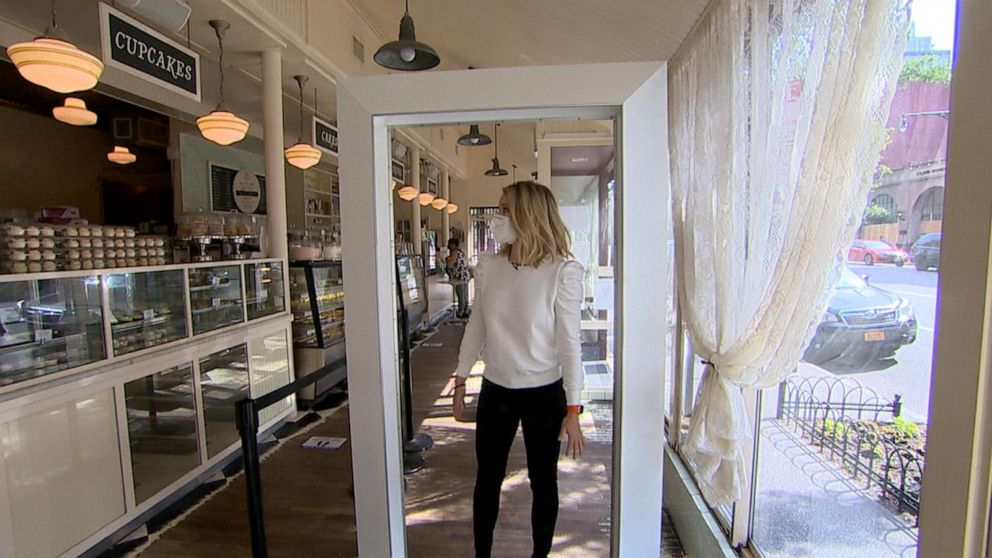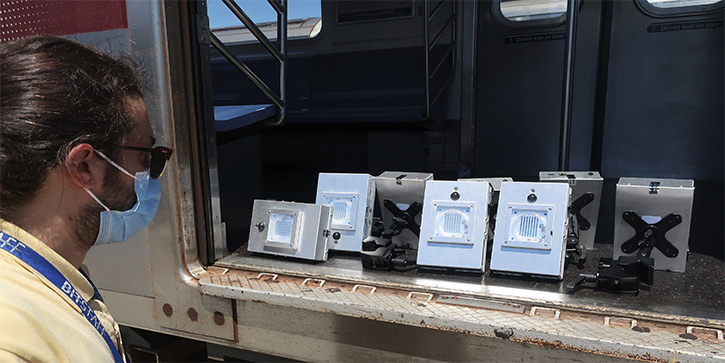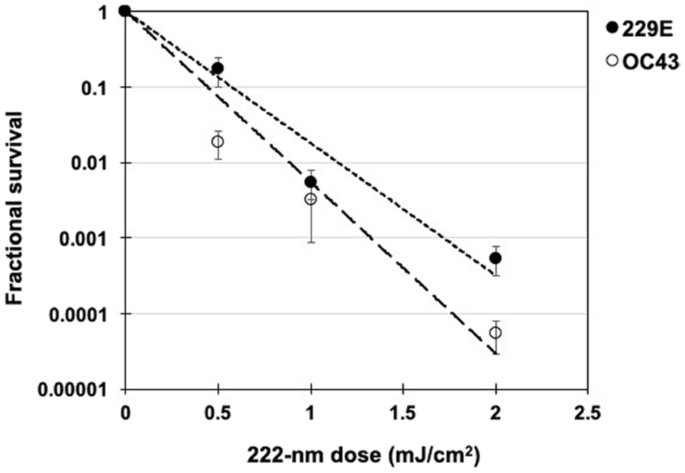task0778
Diamond Member
Or so some people think. There's a guy named John Mauldin who sends out a weekly newsletter about the economy and investing. He said this in his latst one:
Several months ago, Dr. Mike Roizen began to tell me about an innovative new technology called far-UVC being developed by a company called Healthe. He is on their scientific advisory board. Essentially, it uses a specific wavelength of ultraviolet light to kill microorganisms without hurting humans. I was skeptical because I have always been taught that exposure to ultraviolet light was bad for humans. And for good reason; the ultraviolet light that reaches the earth’s surface is dangerous. But not all ultraviolet light reaches that far. And therein lies a story of innovation and perseverance.
Dr. David Brenner, an Oxford-educated physicist at Columbia who applies quantum mechanics to radiation therapy, had a friend die from a superbug caught in the hospital. He became (my word) obsessed with preventing future superbugs from killing people. (The link to his name will bring you to an impressive list of his publications, lectures, and information.)
We have long known ultraviolet light kills viruses and bacteria. The subway trains in Manhattan are exposed to UVC light every night. Many hospital surgical rooms are also exposed to UVC light, of course while humans are not in them, making them very clean rooms for surgery.
In a 2017 TED talk, Brenner explained why a particular wavelength in the ultraviolet light spectrum would not harm humans but still kill superbugs. In 2016, 700,000 people died from exposure to bacteriological superbugs. At the current path we are on, by 2050, the death toll will be 10 million.
In this talk, he shows why “far-UVC,” ultraviolet light in the spectrum of 222 nanometers (I am told that it is technically 205-222 nanometers) won’t penetrate human skin or eyes but can still kill bacteria and viruses—both on surfaces and in the air.
As it turns out, the sun also produces these particular wavelengths, but our atmosphere’s ozone layer stops them. But that doesn’t mean we can’t produce them here.
It is a pretty convincing talk. But I’m also told that Columbia University officials didn’t want to fund his research as they did not see much practicality or viability. When he was initially talking about it, it defied common knowledge—you know, what everyone knows to be true but sometimes isn’t.
So what does a man in a modern world do to fund his obsession? He starts crowdfunding. Seriously. But as it turns out, you can’t patent a wavelength of light, so now other companies are beginning to pick up on his research. COVID-19 made the need for new approaches readily apparent.
Healthe Lighting is already manufacturing devices that look like airport metal detectors. They kill any virus or bacteria on your body as you walk through. One of the main investors is Stephen Ross, a venture capital and private equity investor, who also has an ownership in the Miami Dolphins. They have installed a form of the technology that filters the air in their indoor training facilities. This is from a Miami Herald report.
.
.
Here is an ABC News video of an installation at the iconic Magnolia Bakery in Manhattan (I highly recommend their cupcakes). The Air Force is beginning to test and install far-UVC equipment. Seattle’s Space Needle is using it to market their reopening plan. The company already has over $100 million in backlog orders.

 abcnews.go.com
abcnews.go.com
Like any new innovation, there are problems and solutions. Let’s deal with the problems first. Right now, installations are relatively expensive, and production is backlogged. But there is a solution which doesn’t require more research. Within a few months, the company says it will be able to produce simple LEDs that emit the proper wavelength. They will likely be expensive at first, but like anything involving technology and chips, costs will fall quickly, enabling wider use. (Today it would take $20,000 to equip a 2,000 square foot bar. The LEDs will drop that price dramatically.)
COVID-19 is devastating restaurants and bars because people are in such close proximity. But these LEDs will be easy to put on the walls and ceiling, or even in regular light-emitting lamps on each table. When somebody coughs or shouts and unknowingly spreads a virus, the far-UVC light will kill it. Will it be perfect? No, if you are kissing someone with COVID-19 or another virus, you may still catch the bug. The light doesn’t go past your skin or eyes.
.
.
And we are not talking just about COVID-19. We are talking about all viruses, including new ones. David Brenner’s vision of killing superbugs in hospitals (which caused 49,000 people to die last year last year in just the US) is in reach.
This is simply amazing. It will usher in a new area of health, saving lives, and significantly improving economic productivity. I know other companies are exploring the same prospect. That’s great; nothing like competition to spur innovation. It’s wonderful news for mankind.

 www.mauldineconomics.com
www.mauldineconomics.com
Vaccines are in the works in multiple countries. We know a lot more about testing and treatment of these viruses than we did when COVID-19 first appeared. One assumes that we will be better prepared if and when the next one hits. Or maybe it won't hit, if we can produce inexpensive ways to kill this virus before it creates a pandemic. And the next one to.
Several months ago, Dr. Mike Roizen began to tell me about an innovative new technology called far-UVC being developed by a company called Healthe. He is on their scientific advisory board. Essentially, it uses a specific wavelength of ultraviolet light to kill microorganisms without hurting humans. I was skeptical because I have always been taught that exposure to ultraviolet light was bad for humans. And for good reason; the ultraviolet light that reaches the earth’s surface is dangerous. But not all ultraviolet light reaches that far. And therein lies a story of innovation and perseverance.
Dr. David Brenner, an Oxford-educated physicist at Columbia who applies quantum mechanics to radiation therapy, had a friend die from a superbug caught in the hospital. He became (my word) obsessed with preventing future superbugs from killing people. (The link to his name will bring you to an impressive list of his publications, lectures, and information.)
We have long known ultraviolet light kills viruses and bacteria. The subway trains in Manhattan are exposed to UVC light every night. Many hospital surgical rooms are also exposed to UVC light, of course while humans are not in them, making them very clean rooms for surgery.
In a 2017 TED talk, Brenner explained why a particular wavelength in the ultraviolet light spectrum would not harm humans but still kill superbugs. In 2016, 700,000 people died from exposure to bacteriological superbugs. At the current path we are on, by 2050, the death toll will be 10 million.
In this talk, he shows why “far-UVC,” ultraviolet light in the spectrum of 222 nanometers (I am told that it is technically 205-222 nanometers) won’t penetrate human skin or eyes but can still kill bacteria and viruses—both on surfaces and in the air.
As it turns out, the sun also produces these particular wavelengths, but our atmosphere’s ozone layer stops them. But that doesn’t mean we can’t produce them here.
It is a pretty convincing talk. But I’m also told that Columbia University officials didn’t want to fund his research as they did not see much practicality or viability. When he was initially talking about it, it defied common knowledge—you know, what everyone knows to be true but sometimes isn’t.
So what does a man in a modern world do to fund his obsession? He starts crowdfunding. Seriously. But as it turns out, you can’t patent a wavelength of light, so now other companies are beginning to pick up on his research. COVID-19 made the need for new approaches readily apparent.
Healthe Lighting is already manufacturing devices that look like airport metal detectors. They kill any virus or bacteria on your body as you walk through. One of the main investors is Stephen Ross, a venture capital and private equity investor, who also has an ownership in the Miami Dolphins. They have installed a form of the technology that filters the air in their indoor training facilities. This is from a Miami Herald report.
.
.
Here is an ABC News video of an installation at the iconic Magnolia Bakery in Manhattan (I highly recommend their cupcakes). The Air Force is beginning to test and install far-UVC equipment. Seattle’s Space Needle is using it to market their reopening plan. The company already has over $100 million in backlog orders.

Video Magnolia Bakery’s cutting-edge approach to fighting the coronavirus
Sara Haines details the beloved bakery’s high-tech solution to keeping staff and customers safe.
Like any new innovation, there are problems and solutions. Let’s deal with the problems first. Right now, installations are relatively expensive, and production is backlogged. But there is a solution which doesn’t require more research. Within a few months, the company says it will be able to produce simple LEDs that emit the proper wavelength. They will likely be expensive at first, but like anything involving technology and chips, costs will fall quickly, enabling wider use. (Today it would take $20,000 to equip a 2,000 square foot bar. The LEDs will drop that price dramatically.)
COVID-19 is devastating restaurants and bars because people are in such close proximity. But these LEDs will be easy to put on the walls and ceiling, or even in regular light-emitting lamps on each table. When somebody coughs or shouts and unknowingly spreads a virus, the far-UVC light will kill it. Will it be perfect? No, if you are kissing someone with COVID-19 or another virus, you may still catch the bug. The light doesn’t go past your skin or eyes.
.
.
And we are not talking just about COVID-19. We are talking about all viruses, including new ones. David Brenner’s vision of killing superbugs in hospitals (which caused 49,000 people to die last year last year in just the US) is in reach.
This is simply amazing. It will usher in a new area of health, saving lives, and significantly improving economic productivity. I know other companies are exploring the same prospect. That’s great; nothing like competition to spur innovation. It’s wonderful news for mankind.

Light in the COVID Tunnel
If you ever think you just can’t win, I know how you feel. I’m labeled both a doomsayer and a Pollyanna—sometimes in reaction to the…
Vaccines are in the works in multiple countries. We know a lot more about testing and treatment of these viruses than we did when COVID-19 first appeared. One assumes that we will be better prepared if and when the next one hits. Or maybe it won't hit, if we can produce inexpensive ways to kill this virus before it creates a pandemic. And the next one to.





